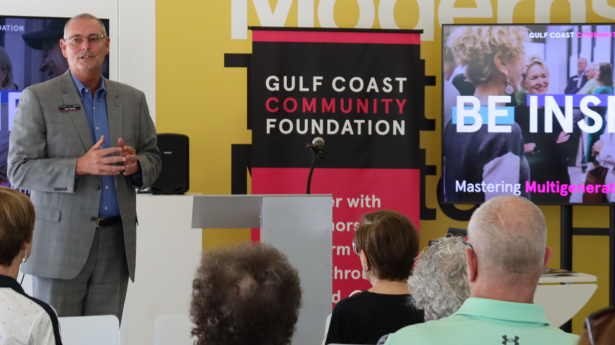
December Newsletter
A Note from Joe

We are almost to the end of 2024 and that means wrapping up not only gifts but your clients' charitable giving for the year. The team at Gulf Coast is here to serve as your go to resource for all your philanthropic questions, if you need assistance in running proposals for charitable solutions, or if you just want a second opinion on an idea. Wishing you a wonderful end to 2024!
Your December Content
As always, we’re committed to keeping you up-to-date on tax and legal developments related to charitable giving so that you can be even more confident in your recommendations to clients. Your December Newsletter contains a few planning strategies to consider for your clients with IRAs.
1. IRA Testamentary Planning
2. Qualified Charitable Distributions (QCDs)
3. Efficient Ways to Give Cheat Sheet

Favorable Solutions: Testamentary IRA Planning
Ever since the Setting Every Community Up for Retirement Enhancement (SECURE) Act was passed heirs receiving beneficiary IRAs are limited in choices: 1. Take lump sum distribution or 2. Take the payments over a period of time not to exceed ten years. However, for your charitably minded clients, naming a CRT might be a favorable solution for the following reasons:
1. Tax Benefits: When an IRA is transferred to a CRT upon the owner's death, the assets can bypass immediate income taxation. This allows the entire value of the IRA to be used for investments within the trust, potentially increasing the total value available for both the income beneficiaries and the charitable remainder.
2. Income Stream: The CRT provides a regular income stream to the beneficiaries, which can be structured as either a fixed percentage or a fixed amount. This can be particularly beneficial for heirs who need ongoing financial support.
3. Charitable Giving: By establishing a CRT, the account owner can fulfill charitable intentions by ensuring that the remainder of the trust after a set time or upon the death of the income beneficiaries goes to designated charities. This can also provide emotional satisfaction knowing that the funds are supporting a cause of importance.
4. Potential for Increased Growth: Since the CRT is a tax-exempt entity, it can potentially lead to increased growth of the trust assets over time as investments are not subject to immediate taxes.
5. Estate Planning Flexibility: A CRT can be part of a comprehensive estate planning strategy, potentially reducing the overall tax burden on heirs and ensuring that the assets are distributed according to the owner's wishes.
6. Asset Protection: A CRT can offer some level of protection from creditors, as the assets in the trust are not directly owned by the beneficiaries until they receive distributions.
7. Taxation of Distributions: A stretch IRA is taxed at 100% ordinary income, however, the CRT distribution may include ordinary, capital gains, tax-exempt, and return of principle.
These advantages can create a financially efficient way to manage an IRA while also supporting charitable causes and providing for heirs.

Tap the Potential: Q&As on QCDs
As you and other attorneys, CPAs, and financial advisors put the finishing touches on implementing clients’ year-end charitable giving plans, you may have a moment when it hits you, “Wait, how exactly does a Qualified Charitable Distribution work?”
That’s a great question, and you are not alone if you’re asking. Even though QCDs are well-covered in financial media, they’re complex enough that it’s hard to remember the nuances when you’re hit with a situation where a client might benefit.
The team at Gulf Coast is here for you! Please reach out with any of your charitable giving questions, including the most common questions about QCDs:
“Is an IRA the only eligible source for Qualified Charitable Distributions?”
Short answer: Almost.
Long answer: An individual can make a Qualified Charitable Distribution directly to an eligible charity from a traditional IRA or an inherited IRA. If the individual’s employer is no longer contributing to a Simplified Employee Pension (SEP) plan or a Savings Incentive Match Plan for Employees (SIMPLE) IRA, the individual may use those accounts as well. In theory, a Roth IRA could be used to make a QCD, but it is rarely advantageous to do that because Roth IRA distributions are already tax-free.
“What is the difference between a QCD and an RMD?”
Short answer: Quite a bit! But a QCD can count toward an RMD.
Long answer: Everyone must start taking Required Minimum Distributions (RMDs) from their qualified retirement plans, including IRAs, when they reach the age of 73. RMDs are taxable income. The Qualified Charitable Distribution, by contrast, is a distribution directly from certain types of retirement plans (such as IRAs) to certain types of charities. A QCD can count toward the taxpayer’s RMD for that year. And because the QCD goes directly to charity, the taxpayer is not taxed on that distribution.
“Can a taxpayer make a Qualified Charitable Distribution even if the taxpayer is not yet required to take Required Minimum Distributions?”
Short answer: Yes–within a very narrow age window.
Long answer: RMDs and QCDs are both distributions that impact retirement-age taxpayers, and it would seem logical that the age thresholds would be the same. Under the SECURE Act, though, the required date for starting RMDs shifted from 70 ½ to 72 and is now up to 73 (which is better for taxpayers who want to delay taxable income). A corresponding shift was not made to the eligible age for executing QCDs; that age is still 70 ½ (which benefits taxpayers who wish to access IRA funds to make charitable gifts even before they are required to take RMDs).
“Can my client direct a QCD to a fund at Gulf Coast?”
Short answer: Yes, if it’s a qualifying fund.
Long answer: While donor-advised funds are not eligible recipients of Qualified Charitable Distributions, other types of funds at Gulf Coast can receive QCDs. These funds include unrestricted funds, field-of-interest funds, designated funds, and endowment funds established by nonprofit organizations.
“How much can my client give through a QCD?”
Short answer: $105,000 per year in 2024, increasing to $108,000 in 2025.
Long answer: A Qualified Charitable Distribution permits a client (and a spouse from a spouse’s own IRA or IRAs) to transfer up to $105,000 in 2024 (and $108,000 in 2025) from an IRA (or multiple IRAs) to a qualified charity. So, a married couple may be eligible to direct up to a total of $210,000 in 2024 to charity from IRAs and avoid significant income tax liability.
Gulf Coast is here to help you and your clients tap the potential of QCDs. Please reach out! We’d love to talk about a QCD strategy for your clients’ immediate gifting needs and beyond.

If this... then that: Your Charitable Planning Cheat Sheet
We’ve recently been asked by attorneys, CPAs, and financial advisors for “cheat sheet” resources to make it easy to determine which type of charitable planning tool is best for a particular client. We love that idea! We’re always happy to be a sounding board for any client situation where charitable giving is an option. Please reach out anytime you and a client are discussing philanthropy. To get your wheels turning, here are three scenarios that have popped up frequently over the last few weeks.
Streamline and tax-optimize charitable giving
| If: Your client supports many different charities every year… | Then: A donor-advised fund at Gulf Coast can be an excellent tool to help a client organize their giving to favorite charities, such as local organizations, places of worship, and an out-of-state alma mater. Clients appreciate how easy it is to support multiple charities while our systems keep track of everything. Plus, clients can give stock and other appreciated assets to their donor-advised funds, often avoiding capital gains tax and simplifying tax receipts to provide their accountants when tax time rolls around. |
Support a specific charity while minimizing risk
| If: Your client has supported a particular charity for many years, intends for that support to continue, and also wants to be sure the funds are used effectively… | Then: Through a designated fund at Gulf Coast, a client can make tax-deductible gifts – during life and through estate gifts – that are set aside to be used exclusively for a particular organization. Gulf Coast then makes distributions from the fund according to the client’s wishes. An advantage of a designated fund is that the assets are out of creditors’ reach if the charity were to run into financial trouble. Plus, a client who is 70 ½ or older can make Qualified Charitable Distributions up to $105,000 per year (increasing to $108,000 in 2025) from IRAs to a designated fund. |
Leave a charitable bequest and reap significant tax benefits
| If: Your client intends to provide for charities in an estate plan and owns an IRA or other qualified retirement plan… | Then: By naming a fund at Gulf Coast as the beneficiary of a qualified retirement plan, your client achieves extremely tax-efficient results. Not only is estate tax avoided on the retirement plan assets flowing to the charitable fund, but income tax is also avoided. Indeed, the income tax hit on retirement proceeds left to heirs can be steep. |
The bottom line here is this:
If you encounter any situation with a client where charitable giving could be involved…
Then please reach out! Most of the time, Gulf Coast can offer a solution that meets both the client’s tax and estate planning goals and the client’s objectives for supporting their favorite charities. At the very least, we can point you in the right direction.
Your Resource.
As you serve your philanthropic clients, we strive to be your resource and sounding board. Understanding the charitable side of the equation allows us to serve as a secondary source for you as you manage the primary relationship with your clients.
Connect with us anytime! It’s our pleasure to work with you in partnership as you help your clients achieve their charitable giving goals for this year and many years beyond tomorrow.


